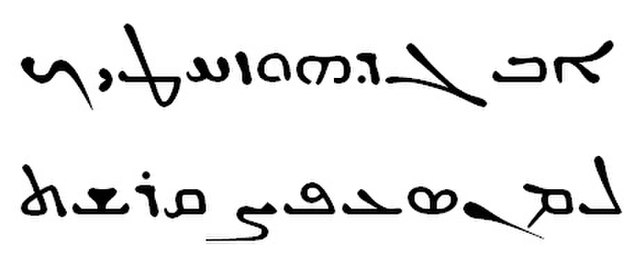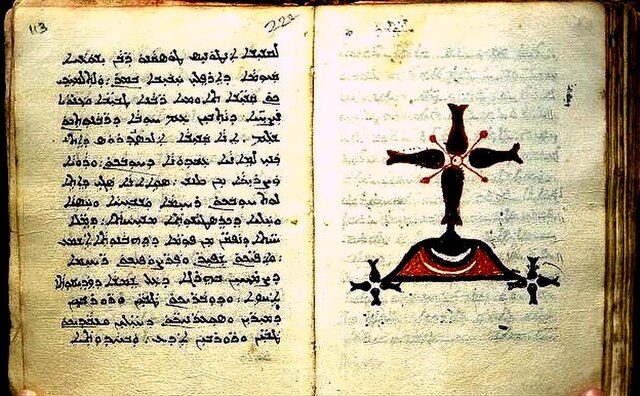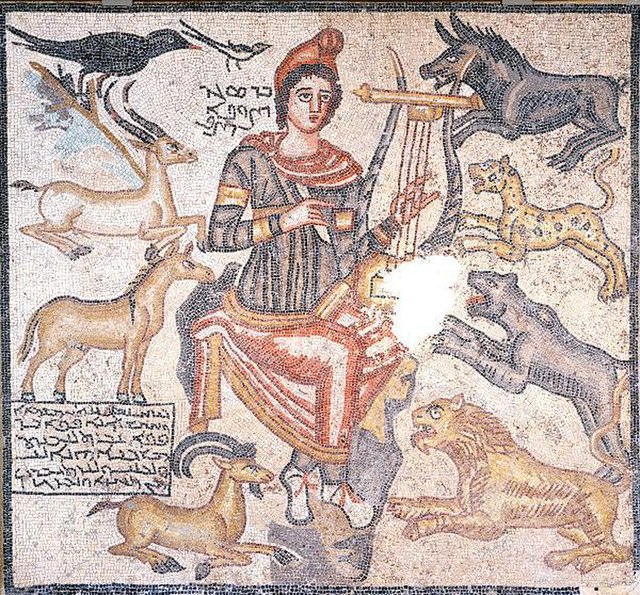The Maronite Church is an Eastern Catholic sui iuris particular church in full communion with the pope and the worldwide Catholic Church, with self-governance under the Code of Canons of the Eastern Churches. The head of the Maronite Church is Patriarch Bechara Boutros al-Rahi, who was elected in March 2011 following the resignation of Patriarch Nasrallah Boutros Sfeir. The seat of the Maronite Patriarchate is in Bkerke, northeast of Beirut, Lebanon. Officially known as the Antiochene Syriac Maronite Church, it is part of Syriac Christianity by liturgy and heritage.
Seat of the patriarchate in Bkerké, Lebanon
St. Maron: Russian orthodox icon
Remains of the arch of Brad Cathedral north of Aleppo, where Saint Maron's tomb was attached
Maronite monk and pilgrims, Mount Lebanon
The Syriac language, also known as Syriac Aramaic and Classical Syriac ܠܫܢܐ ܥܬܝܩܐ, is an Aramaic language. The language is a dialect that emerged during the first century AD from a local Aramaic dialect that was spoken in the ancient region of Osroene, centered in the city of Edessa. During the Early Christian period, it became the main literary language of various Aramaic-speaking Christian communities in the historical region of Ancient Syria and throughout the Near East. As a liturgical language of Syriac Christianity, it gained a prominent role among Eastern Christian communities that used both Eastern Syriac and Western Syriac rites. Following the spread of Syriac Christianity, it also became a liturgical language of eastern Christian communities as far as India and China. It flourished from the 4th to the 8th century, and continued to have an important role during the next centuries, but by the end of the Middle Ages it was gradually reduced to liturgical use, since the role of vernacular language among its native speakers was overtaken by several emerging Neo-Aramaic dialects.

An 11th-century Syriac manuscript
The Syriac alphabet
Late Syriac text, written in Madnhāyā script, from Thrissur, Kerala, India, 1799
An ancient mosaic from Edessa, from the 2nd century CE, with inscriptions in early Edessan Aramaic (Old Syriac)








